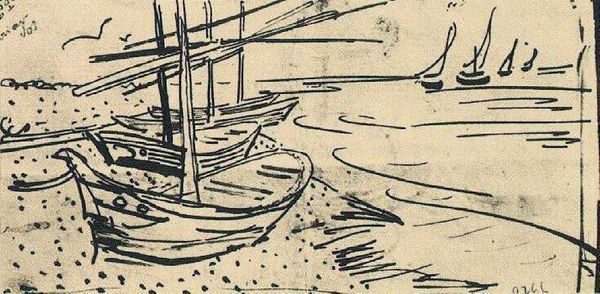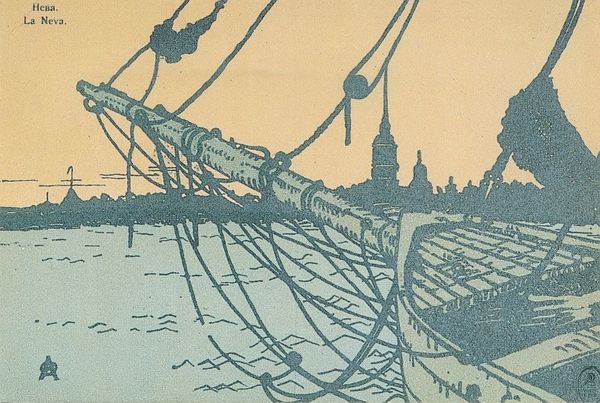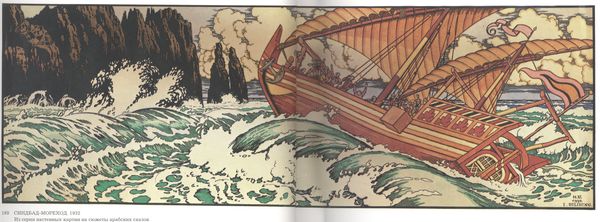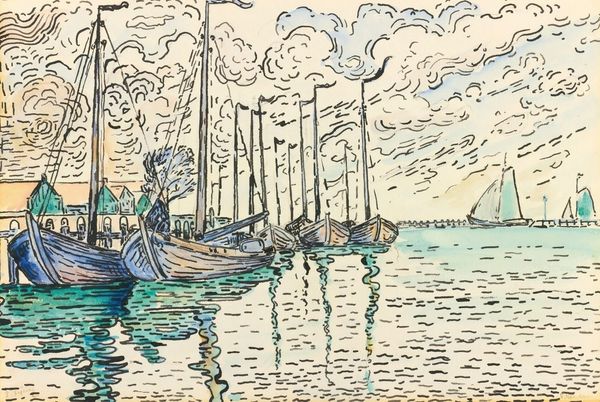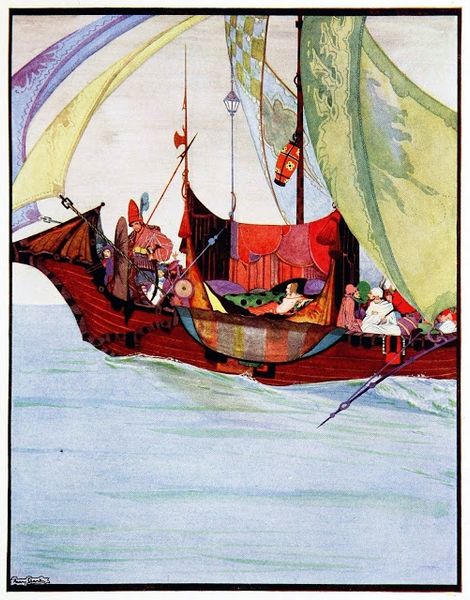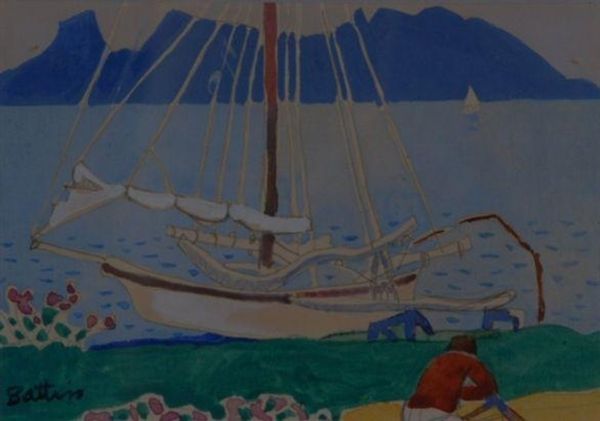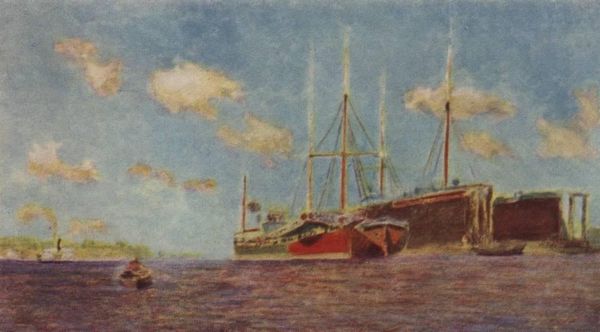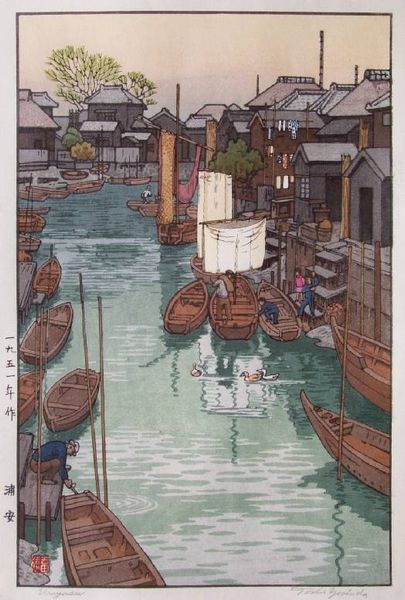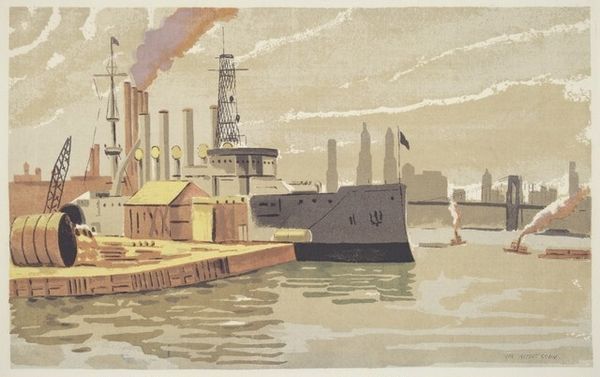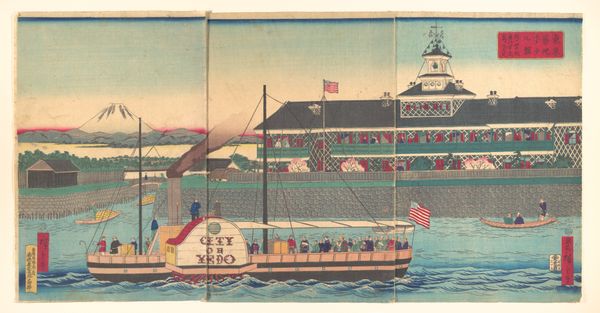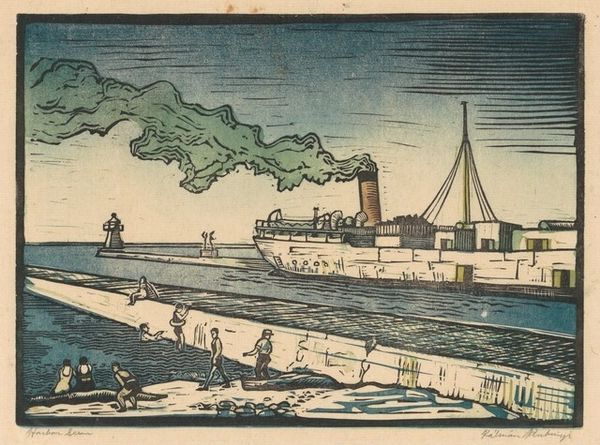
drawing, watercolor, ink
drawing
boat
ink painting
ship
asian-art
landscape
waterfall
river
ukiyo-e
watercolor
ink
orientalism
water
cityscape
watercolour illustration
Copyright: Public domain
Curator: Here we have Ivan Bilibin's "Great Ustyug," executed in ink and watercolor. Bilibin, of course, is well-known for his illustrations inspired by Russian folklore. Editor: Immediately, I'm struck by its stylized simplicity. It feels both charming and a bit austere, like a page from a beautifully rendered storybook. Curator: Indeed. Bilibin, through his involvement in the "World of Art" movement, consciously sought to create a uniquely Russian artistic identity that drew on medieval art, folk tales, and even byzantine influences. Note how the sharp lines of the buildings and boats are offset by the loose fluidity of the waterfront in the composition. This wasn’t just personal artistic expression; it was deeply tied to constructing a sense of national artistic pride during a time of immense social and political upheaval. Editor: And the symbolic weight he invests in these architectural features—domes and ramparts standing boldly as guardians, framing the common folk alongside their plain, functional boats. I feel that these symbols present a strong visual narrative of both protection and humility. The colours themselves speak to this dichotomy—earthy ochres alongside stark whites and greens. The artist conveys the importance of the church in that time period in Russian life, with its architectural visual dominating the composition. Curator: Exactly. And Bilibin's approach wasn’t without its critics. Some felt it romanticized the past a bit too much. However, what he did manage to do was popularise these visual motifs. His style was very impactful, helping to influence theatrical design and even propaganda in later years, cementing an idealised version of old Russia in the cultural consciousness. Editor: And what is fascinating is seeing those motifs subtly reappear and echo through time. I sense the powerful influence of a master storyteller who truly knows how to blend tradition, faith, and nationality. I wonder what modern artists learn from him? Curator: I see his work as an important chapter in Russian artistic identity, and hopefully our viewers feel inspired to look more closely at the history. Editor: I hope our listeners consider the subtle emotional storytelling through art and symbols from "Great Ustyug" onwards.
Comments
No comments
Be the first to comment and join the conversation on the ultimate creative platform.
